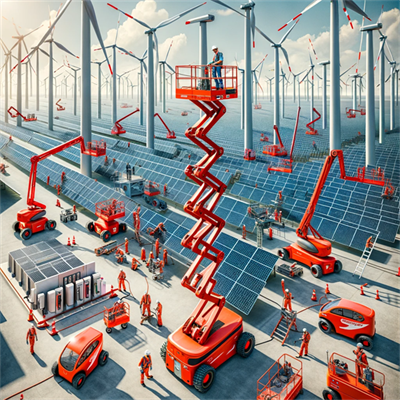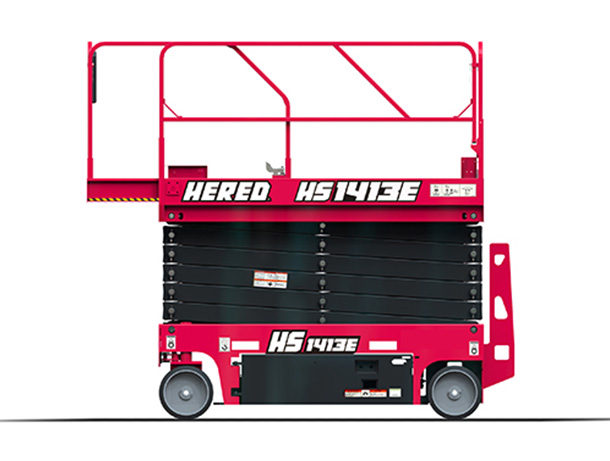New Energy
Application Description
In the new energy industry, HERED provides various types of new energy lifts, including scissor lifts and boom lifts suitable for the new energy industry.
In the new energy industry, which encompasses sectors like wind power, solar energy, and electric vehicle (EV) charging infrastructure, aerial work platforms (AWPs) are used in various capacities:

Wind Turbine Maintenance and Installation: Telescopic boom lifts are frequently used in the wind industry for the construction and maintenance of wind turbines. They are used to lift technicians to the nacelle and blades for repairs, inspections, and cleaning. The long reach and stability of telescopic boom lifts are essential for working at the great heights presented by wind turbines.
Solar Panel Installation and Maintenance: For solar farms, electric scissor lifts and articulating boom lifts are used to install and maintain solar panels. Scissor lifts provide a stable platform for workers to carry out installations and cleaning of panels on large solar farms. Articulating boom lifts are useful for reaching over and around obstacles when installing solar panels on rooftops or in irregularly shaped areas.
Electric Vehicle (EV) Charging Station Installation: Compact boom lifts or vertical mast lifts are often used when installing EV charging stations, especially in urban areas or parking structures where space may be limited.
Battery Storage Facility Maintenance: In facilities where energy storage systems are housed, vertical mast lifts are utilized for maintenance tasks. They offer the ability to work in confined spaces and can be easily maneuvered around the facility.
Transmission and Power Line Work: Insulated bucket trucks are essential in the new energy sector for the maintenance of power lines that transmit electricity from renewable sources. The insulated buckets ensure the safety of workers dealing with high-voltage lines.
Research and Development Facilities: Personal portable lifts are used in R&D facilities for the new energy sector, allowing technicians to access high areas during the development and testing of new energy technologies, such as advanced battery systems or experimental solar panel designs.
Each AWP is chosen for its ability to provide safe and efficient access to high and hard-to-reach areas while accommodating the specific needs of tasks related to new energy infrastructure. Safety features, especially those that protect against electrical hazards, are critically important. Additionally, AWPs used in the new energy sector often need to be capable of navigating over uneven terrain, especially in wind and solar farms, while providing a stable work platform.









